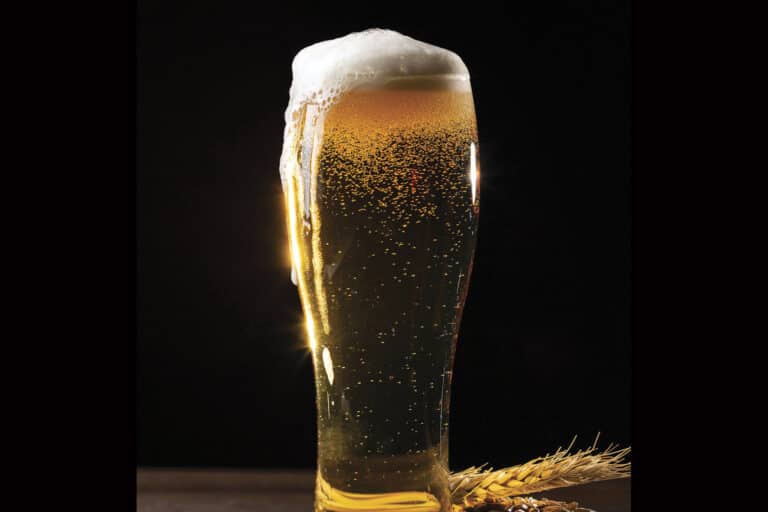BEER
Getting To The Bottom Of Your Beer

WORDS: Krista Hall, Certified Cicerone PHOTOGRAPHY Freepik.com
Who knew there were so many factors to consider in the making of one of Australia’s most loved beverages?
What do wheat, barley, oats, rice, corn, and rye all have in common? No, it is not the list of items in a shopping aisle… they are all used to make beer! Most people know ‘malt’ for beer as barley, but there are, in fact, many other grains used to make beer and in different ratios – each grain changes the beer in different ways.
Let’s start with what malt is. Malt is a cereal grain that has been steeped in water which then causes the grain to germinate and puff up full of starches. Just before it germinates, it is halted by drying out the malts. It is a form of trickery used to create a product that has starch (which is essentially sugars) that then can be used for brewing.
Barley is the most popular choice for brewing with many different styles of barley malt available to choose from, from pale malt to black patent malt. The darker the malt is, the less sugars available to use up and ferment into alcohol, so generally there is always a pale malt base with other malts added to add the flavours and textures that the brewer is looking to create. Pale malt has an uncooked dough, white bread flavour profile and the darker you go, it enhances the flavour complexity. Crystal malts taste more biscuity and caramel and black malts taste of chocolate and coffee. A pale ale will have lighter malts in the recipe, amber ales could have five to ten different malts in the recipe and stouts and porters the same. It’s all a craft of balance that the brewer has to find.
Wheat is often used in small amounts in ales to add a haze to the beer as well as the proteins in wheat add to the lacing and head (foam on top of the beer) retention. Wheat beers can make up 50% of the recipe if it is a wheat beer style, but barley malt is still used for that other 50%. Wheat also increases the body of beer and adds to a fuller mouthfeel.
Corn is added to lighten a beer and adds a smoothness to the beer. It is often used in American lagers such as Budweiser. Corn is generally a cheaper option than barley, so the cost is more appealing to some companies for mass-produced styles. Rice is also used to lighten the body of beer and helps reduce the ‘maltiness’ that is present. Hence why corn and rice are used so often in lagers which are 95% of the beers consumed in Australia – creating a beer that is ‘less beery’ for the masses.
Oats and rye affect the texture of the beer. It leaves beer with a smooth and creamy texture and silky mouthfeel. Whole oats, steel-cut, rolled oats or oat flakes can be used and even malted oats. It all depends on what beer the brewer wants to create of what type is added. Some pale ales can benefit from the addition of oats to add to the silky mouthfeel and darker style beers like stouts benefit from the addition of oats to create the creamy mouthfeel. Rye can add a spicy or pumpernickel character to the finish of beer and paired with certain hops and malts, can create quite an interesting flavour profile.
Home brewers and professional brewers play around with different malt bills (ie malt recipes) similar to baking bread. It’s all trial and error and a bit of experimentation. It’s always interesting to see what malts are used in your favourite brew, as some can be super simple with one malt used while others can have many different styles of grains and colours of the malt rainbow. If you get a chance to taste malts at a brewery, I suggest you taste through from pale to dark and really tune in to what flavours you are picking up – it makes it easier to pick up the flavours of those malts when you taste your beers.









